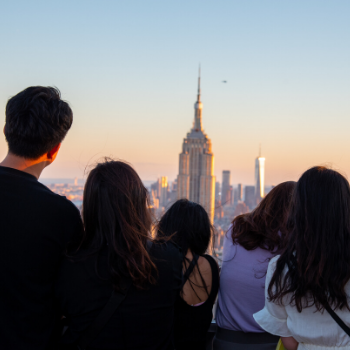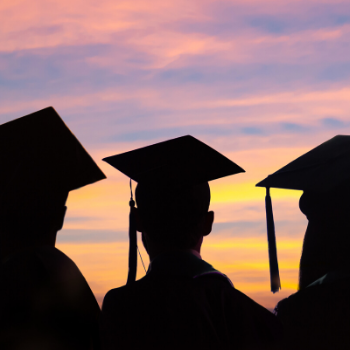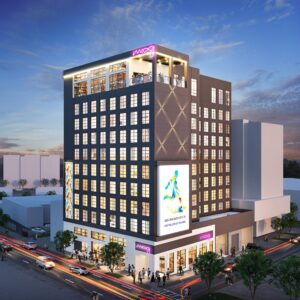
5 Reasons to Switch Your H-1B Visa to an EB-5 Visa

There are many visa paths available to foreigners who seek to live, work or study in the United States. And they each come with their own set of requirements and limitations. Generally, the H-1B visa is popular since it is a temporary (nonimmigrant), employment-based visa that is granted to an eligible temporary worker when a U.S. employer applies for the petition. While this may be a fast track to living in the U.S. for some people, it is temporary and comes with a lot of limitations. For those who move here with their family, a more permanent solution may be desired. It’s for this reason that many foreign professionals are comparing the H-1B vs. EB-5 visa. And as the immigration landscape evolves, there may be no better time to consider making the switch to an EB-5 visa. Read on to learn some of the advantages of switching from H-1B to EB-5.
1. Route to a Permanent Green Card
The H-1B visa allows the holder to be admitted into the United States for a period of up to three years, with an extension that cannot go beyond a total of six years generally. In contrast, the EB-5 visa is an investor visa with a direct path to permanent residency. EB-5 applicants may obtain their two-year conditional green card soon after their I-526 application is approved (subject to any country-specific backlogs). After a two-year period, they can apply to get the conditions removed to obtain permanent resident status. “Depending on the investor’s country of origin, the wait periods to obtain an EB-5 visa vary,” said Rich Marquard, Executive Vice President of Investment Operations at The LCP Group, L.P., a 45-year-old real estate investment management firm in New York that specializes in EB-5 projects. “But generally, the EB-5 visa is one of the fastest and easiest ways to obtain permanent U.S. residency.”
2. No Sponsorship Required
One of the major hurdles for foreign professionals is finding an employer who is willing to sponsor their H-1B visa. But even when this hurdle is overcome, some H-1B holders end up in a job they don’t enjoy. And due to the sponsorship dependency of the H-1B visa, they may not be able to advance their careers and increase their pay since they cannot freely move to a new job and company. The EB-5 visa, in comparison, has no employer sponsorship requirement and does not depend on language proficiency, business management experience or proof of advanced educational degree. The EB-5 visa allows its holder to work for any employer they choose, switch employers when they choose and even start their own business or move their existing business to the U.S.
3. Live, Work or Study in Any State

Another important reason to consider switching your H-1B to EB-5 is that H-1B visa holders are restricted to working, and thus living, where their employer-sponsor requires. Conversely, EB-5 visa holders are free to choose where they want to live, work and study. And since an EB-5 visa is granted to the investor, the investor’s spouse and all unmarried children under the age of 21, these freedoms apply to everyone. This is an important consideration given the recent challenges posed on spouses of H-1B holders who were initially provided work permits under the Obama administration. A recent lawsuit filed at the U.S. Court of Appeals for the District of Columbia Circuit disputes the right to work for spouses of H-1B workers. If the Obama regulation is revoked, it could limit the ability of H-1B spouses to bring income into the household. But with an EB-5 visa, the investor, spouse, and children can work and study wherever they like. They can build their career in the United States and obtain as many advanced degrees as they like. No sponsorship is required for anyone.
4. Increase in H-1B Denials
According to the latest government data, there has been a significant increase in H-1B denials by USCIS. Denial rates for initial employment have risen from 6 percent in 2015 to 24 percent through the third quarter of 2019. Along with this uncertainty, the H-1B annual cap of 65,000 visas was reached within five days during the years 2014 through 2020. For comparison, during 2012 it took more than 200 days to reach the quota. With demand increasing and availability decreasing, it is clearly getting harder to obtain or renew an H-1B visa. However, there are 10,000 EB-5 investor visas available annually and the EB-5 program does not have a lottery system. Any foreign investor who can invest a minimum of $900,000 USD of legally sourced funds in a U.S.-based business is eligible to apply. And this single investment amount provides permanent green cards for the investor, spouse, and all unmarried children under age 21.
5. EB-5 Return on Investment
Another difference between H-1B vs. EB-5 is that EB-5 is an investor visa. And as such, the investor is required to invest at least $900,000 into a U.S business and is eligible to receive back that investment along with a return. The EB-5 investor visa program is administered by the United States Citizenship and Immigration Services (USCIS) and was implemented by Congress in the early 1990s as a means to stimulate the U.S. economy through foreign investment and to create jobs for American workers. When investing in a U.S. commercial real estate project, the program is structured so that the investor receives back their investment. But earning a reasonable return on investment requires working with a seasoned real estate investment manager and experienced EB-5 Regional Center. “Investors need to research their investment partner and choose one that has expertise in real estate investing and a track record of success,” said Marquard. “And look for a partner that offers investor assistance with filing the petitions and other major steps of the process.”
H-1B vs. EB-5
Overall, the differences between H-1B vs. EB-5 are significant in terms of how they impact the visa holder’s life and future. While the H-1B visa can provide a short-term solution for legal work status in the U.S., it provides few opportunities for longevity. If you already live in the United States on an H-1B visa and would like to take control of your destiny, then you may want to learn more about obtaining a permanent EB-5 visa for you and your family. Applying for an EB-5 visa can be done during the H-1B period, and the opportunities afforded by permanent residency are endless. So what are you waiting for?
Obtain more information on attractive U.S. investment projects with potential for a permanent U.S. green card.










